The Idiots hope their gentle readers will tolerate another the long exposition – though the visible remnants pictured in the photographs are not very dramatic, the underlying story would make a great soap opera.
For over a thousand years, Polynesian immigrants populated the Hawaiian archipelago with no European contact. That all changed in 1778 when Captain James Cook, on his extended voyages to chart the Pacific, landed on Kauai.
For about 700 years, the people of Hawaii lived under a strict set of laws designed to propitiate the gods and maintain strict societal divisions among royalty, religious, and commoners. Human sacrifice was common. People considered it a privilege to be chosen for roles that ended in death because the good of the community was considered the greatest good. Warfare was frequent as various nobles would contest for land and dominance, but wars tended to be short – sometimes only hours or days.
The arrival of the Europeans coincided with the rise to power of a young king on the Big Island, King Kamehameha. The king maintained many traditions, but he happily adopted European weaponry. Warfare on the islands had been limited by the rugged lava surfaces, steep mountains, and easy ocean access. Weapons like clubs and spears meant opposing forces had to make close contact.
Gunpowder changed everything. Muskets and cannons allowed for killing from a distance. Large scale conquest became practical. Personal combat gave way to mass slaughters. When he conquered Maui in 1790, the two armies were evenly matched – until Kamehameha brought in two of his British “advisors” who used two cannons to slaughter so many that the fight became known as “The Battle of the Dammed Waters” because the bodies clogged the river of Iao valley. Kamehameha was able to unify all the islands as the Kingdom of Hawaii by 1810.
As dramatic as the changes brought about by European technology were, a deeper change was taking place in the social fabric. People began to question kapu – the rules that formed the very structure of the society. They saw Europeans living quite differently without incurring the wrath of the gods. Though it could be fatal in public, private questioning of the taboos was growing.
When Kamehameha died in 1819, his favorite wife, Queen Ka'ahumanu, was committed to destroying the kapu system. Kamehameha’s heir, Liholiho (Kamehameha II), loved European trade goods and enjoyed drinking and carousing. One of the most significant taboos was against men and women eating the same food at the same table. In a dramatic scene at a feast, the inebriated prince had food delivered to the women’s table and joined them to eat it. Whispers ran through the crowd, then became shouts. “The kapu is dead!”
Not everyone embraced the change. Kamehameha planted seeds of discord before his death. Though he recognized his son as his heir, he transferred the War God Ku to his nephew, Kekuaokalani, effectively making him the war chief for the kingdom. Kekuaokalani became the rallying point for rebel forces committed to reinstating the traditional system.
It’s hard to imagine as one stands among the fairways of a carefully tended golf course south of Kona… armies of barefoot warriors crossing rough lava fields to clash with spears and clubs embedded with sharks teeth, now supplemented with muskets and cannons. In a short time, over 300 were dead, including the rebel leaders. The new king had won the day and much of traditional Hawaiian life and culture was swept away. The fallen from both armies were buried in terraces in the lava hillside.
Within a year, Christian missionaries were welcomed to the islands and Christianity rapidly filled the vacuum left when the old gods were abandoned. Traditional rituals and beliefs were frowned upon. Some of them were preserved in secret, usually passed through generations via oral tradition.
Today many Hawaiians are attempting to reintroduce some of their traditions. Kapu is dead… but rituals like chanting to the sunrise and sunset and recognizing the gods of earth, air and sky are coming out of the shadows. Much as one finds among Native-American tribes on the mainland, some Hawaiians are attempting to reclaim their unique identity and instill pride in their culture.
A simple plaque attached to a boulder along the edge of a golf course marks the site of Kuamoo Battlefield and Lekeleke burial grounds.
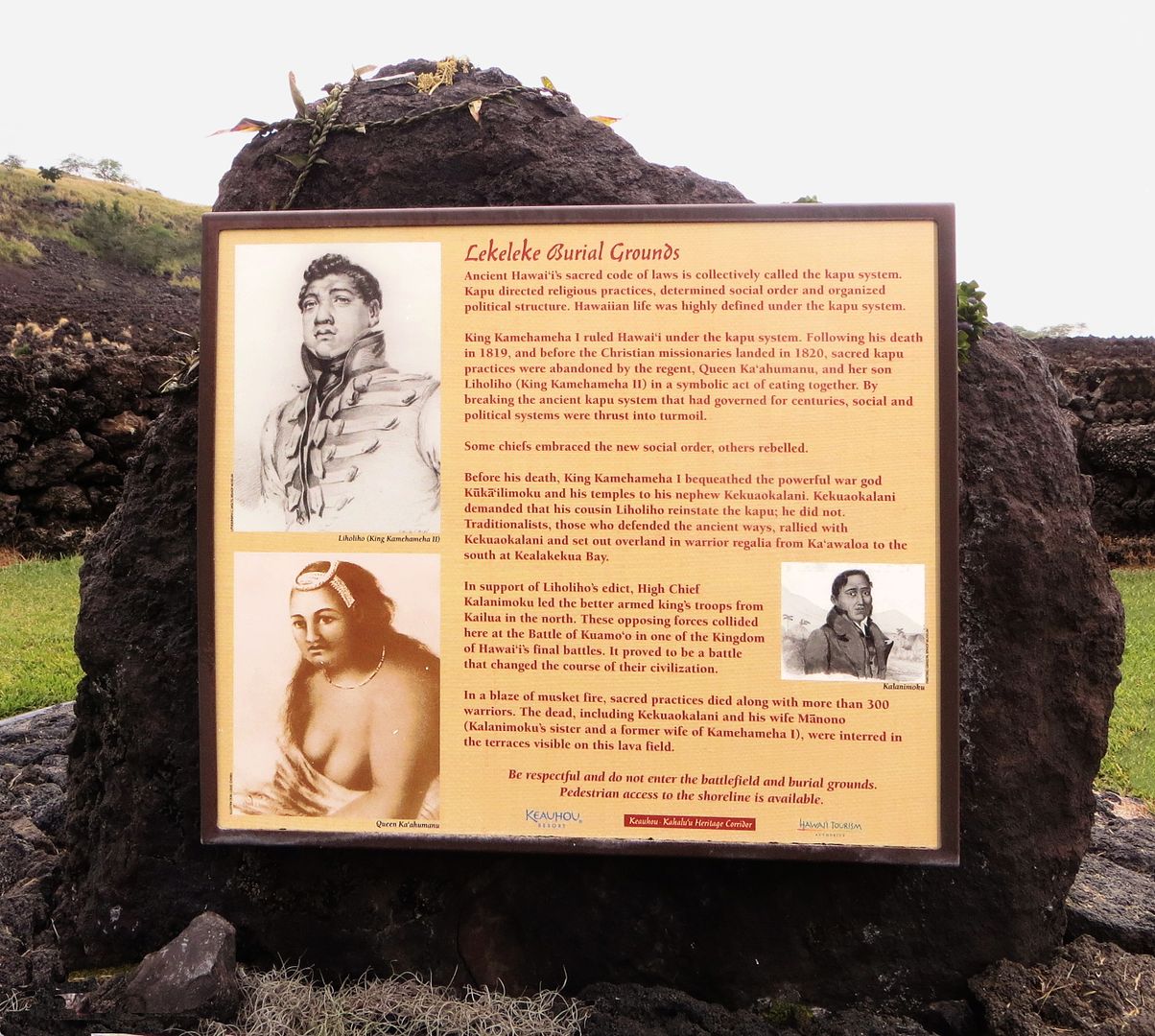
But if one looks past the plaque, there is evidence that Hawaiians continue to have reverence for their ancestors in traditional tokens left at this hallowed place.
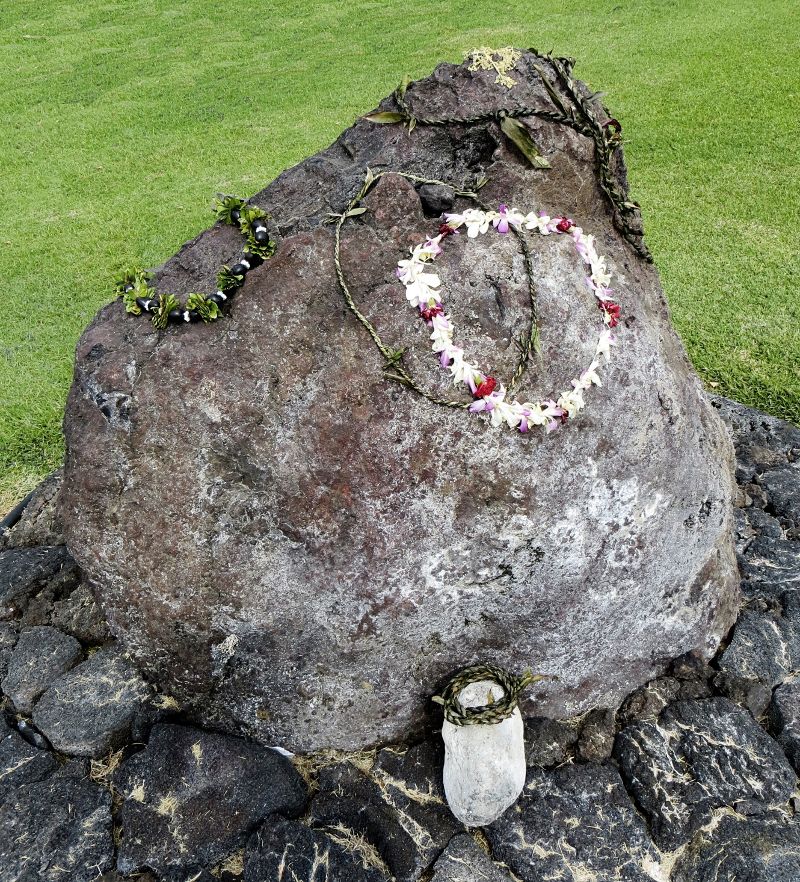
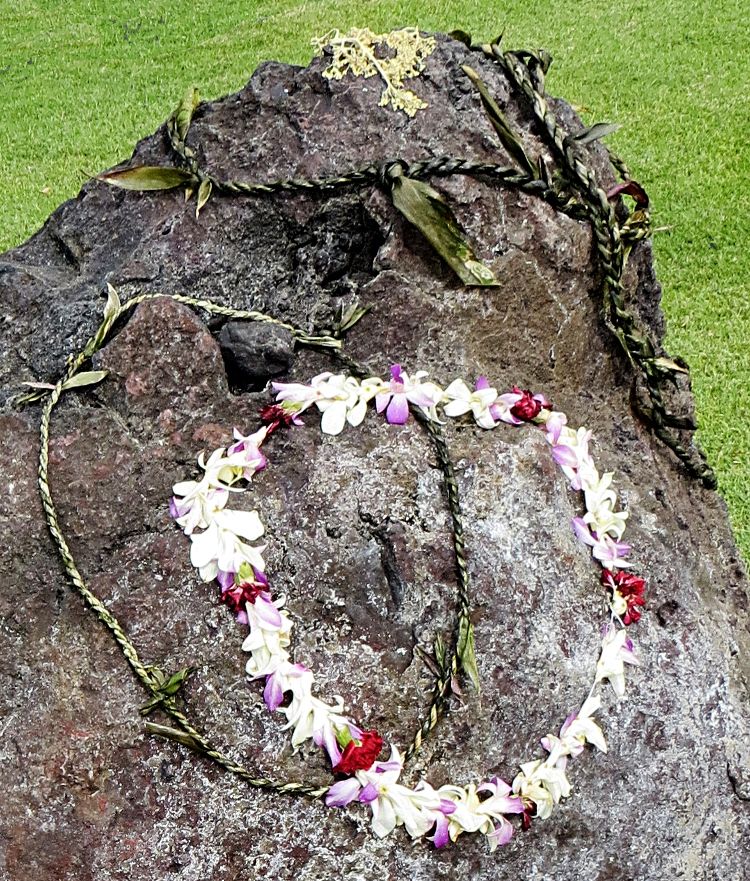

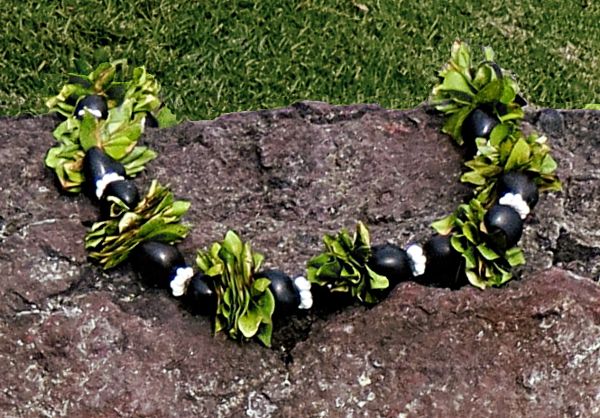
Most tourists pass by this site without realizing it exists. It takes a careful look to realize this is not just another lava field. The terraces containing mass graves are hard to pick out.
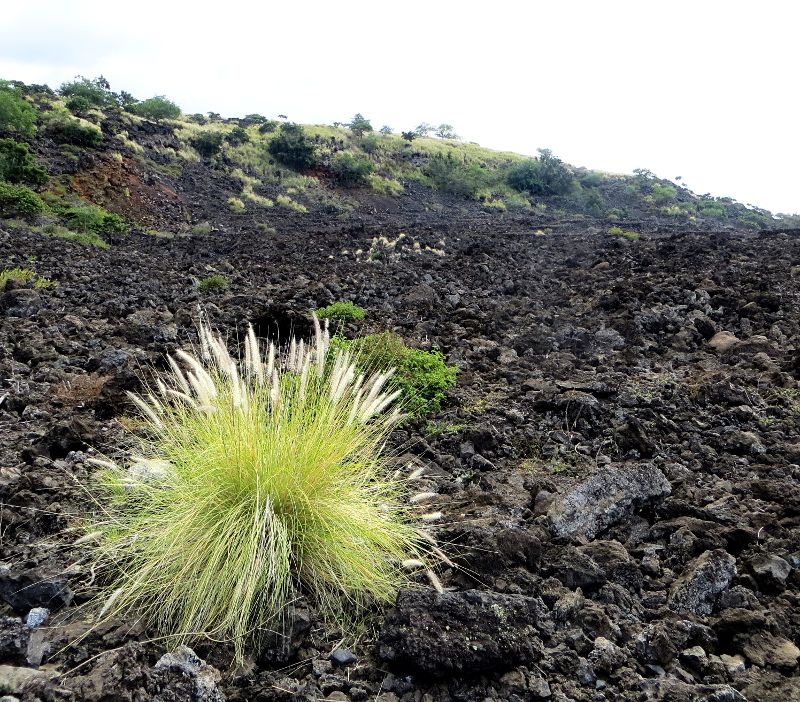
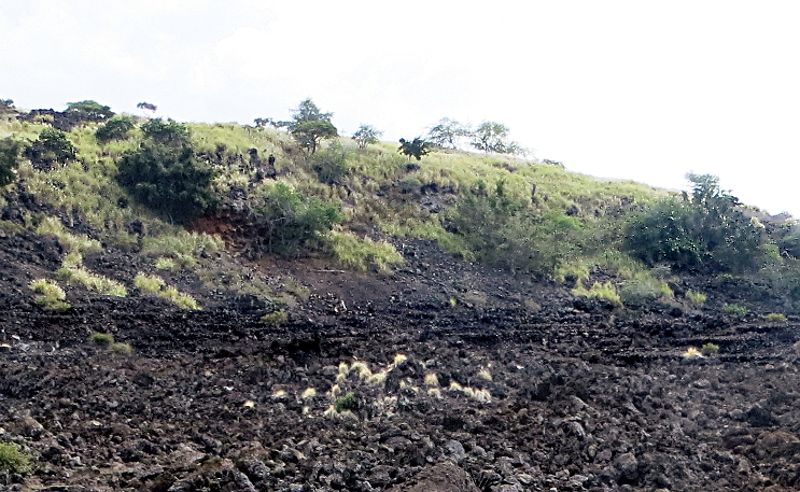
The old gods were not just abandoned…
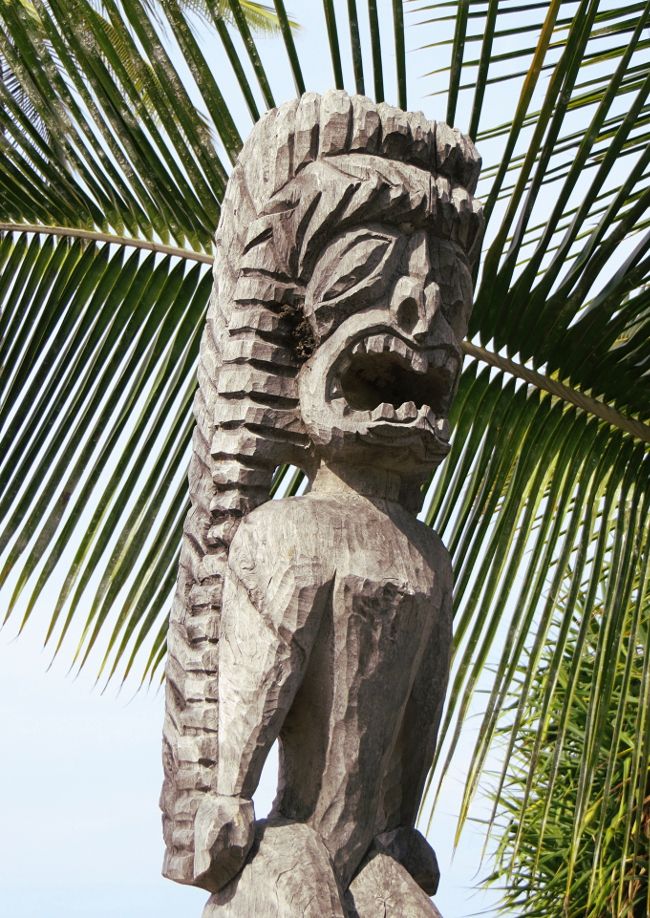
they were systematically eradicated by the adoption of Christianity. Near these historical sites one can also find a traditional “Painted Church” – St. Benedict’s Roman Catholic Church. The grounds are remote… restful.
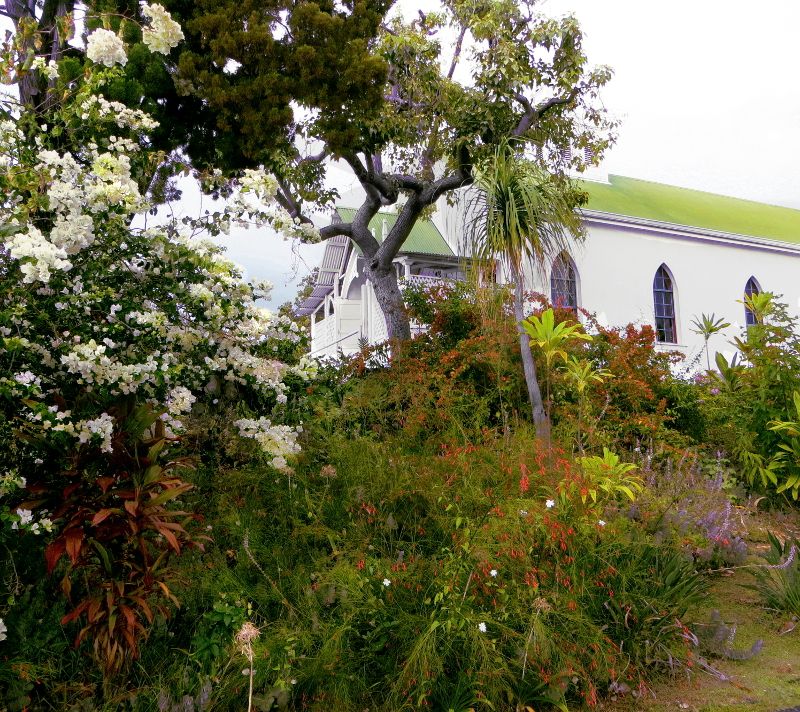
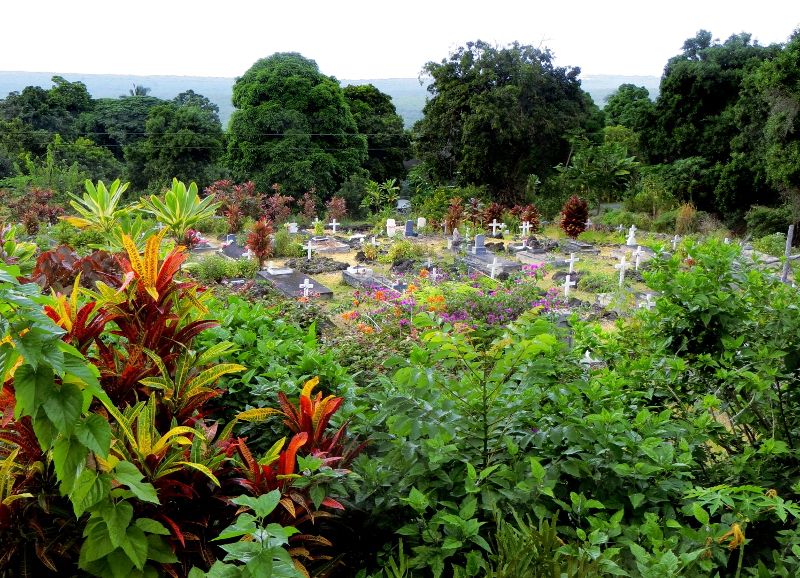
As Roman Catholic missionaries spread their doctrine around the world, they often found that people could relate more easily to the story of Mary than to Jesus himself. Jesus is God… people from widely varied cultures respond to the story of a human woman who experienced the joys and agony of giving birth to a god and having to watch his successes and brutal execution. Images of Mary often take on the characteristics of the local community. In Poland, they revere “The Black Lady of Częstochowa.” In Mexico, their most revered image is “Our Lady of Guadalupe.” Ethnic images of “the Madonna and child” are found around the world.

A shrine to “Our Lady of Hawaii.”
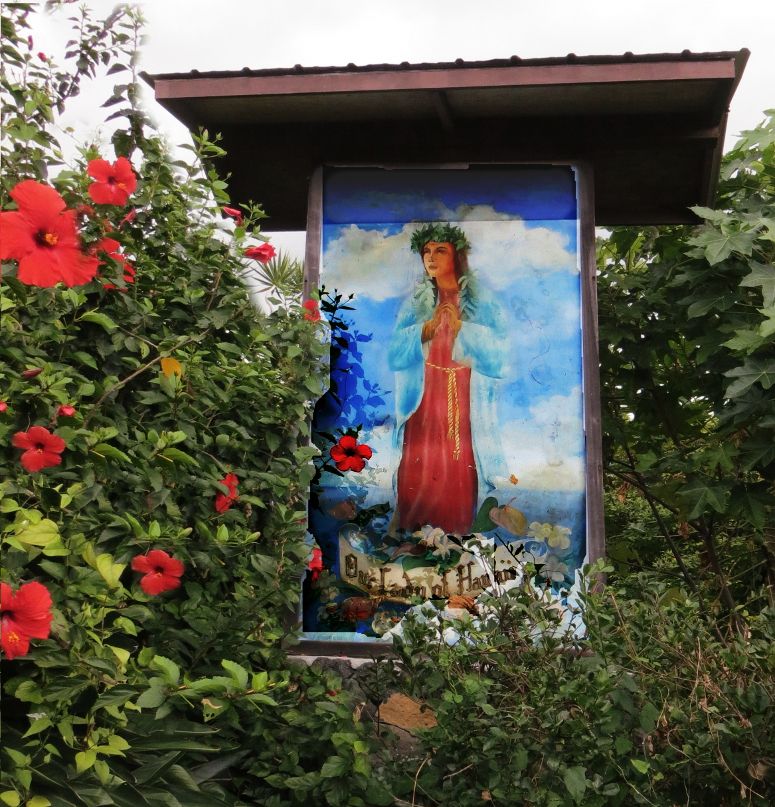
Even near the Christian church, one can find signs of traditional reverence.

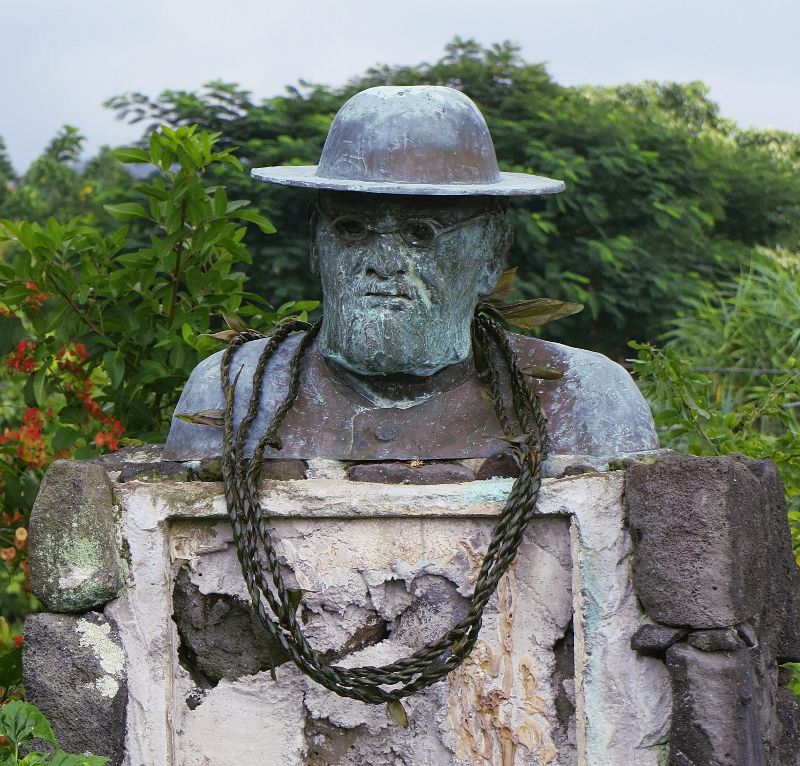
The current church was built in 1899 by Father John Velghe. He had no professional art training, but since most of his parishioners could not read, he used regular house paint on regular wood to create pictures that helped him teach principles from biblical stories.
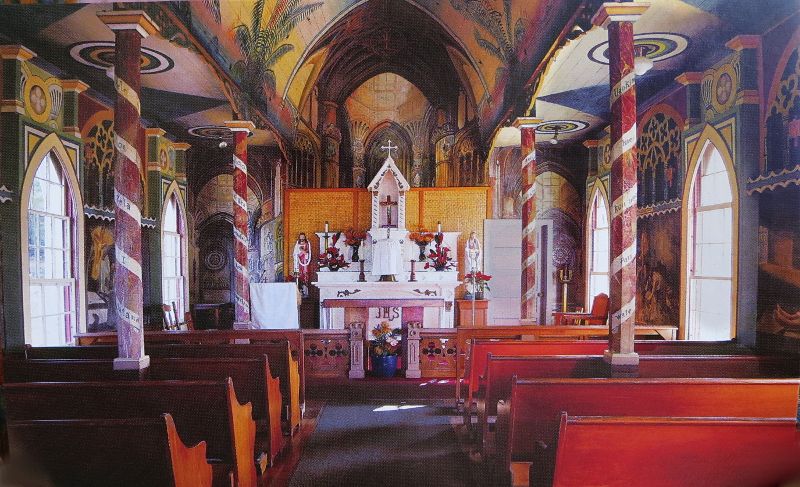
“Buy a postcard!”
Idiot He’s father was a professional photographer. When the family traveled, he took great photos. But when Idiot He’s mother would demand he take pictures of the interiors of the many beautiful churches they visited, he’d respond “Waste of film… buy a postcard!” The photographers who produce postcards have access to the interiors under ideal conditions. They can control the light and take extremely long exposures. He knew his photos couldn’t come close… and he didn’t like taking poor pictures. Their photo albums are full of photographs interspersed with postcards.
Continuing the tradition, Idiot He has repeated the “buy a postcard” comment many times and Idiot She has purchased her share of picture postcards. But the advent of digital photography has given Idiot He another alternative. How about taking a picture of a postcard? (Picture above is a digitally-enhanced selection from the photo below...)
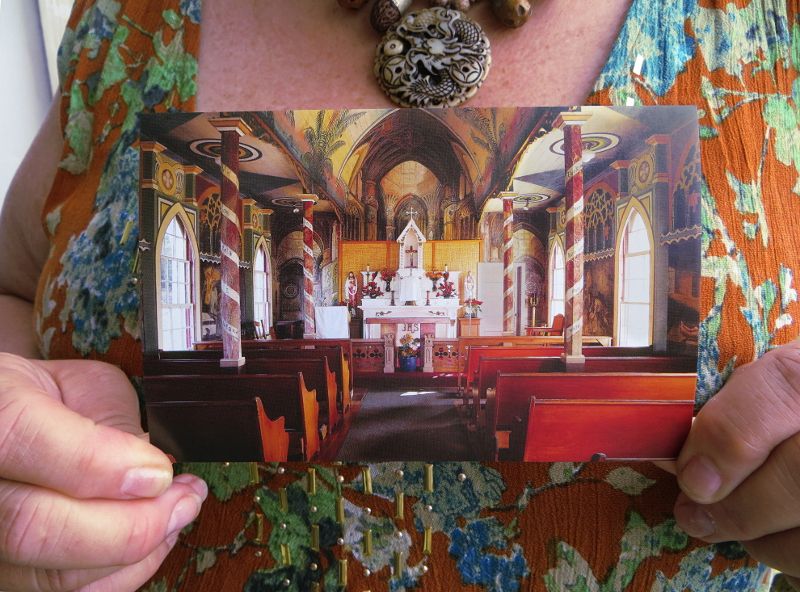
A few (inferior) shots of the interior…
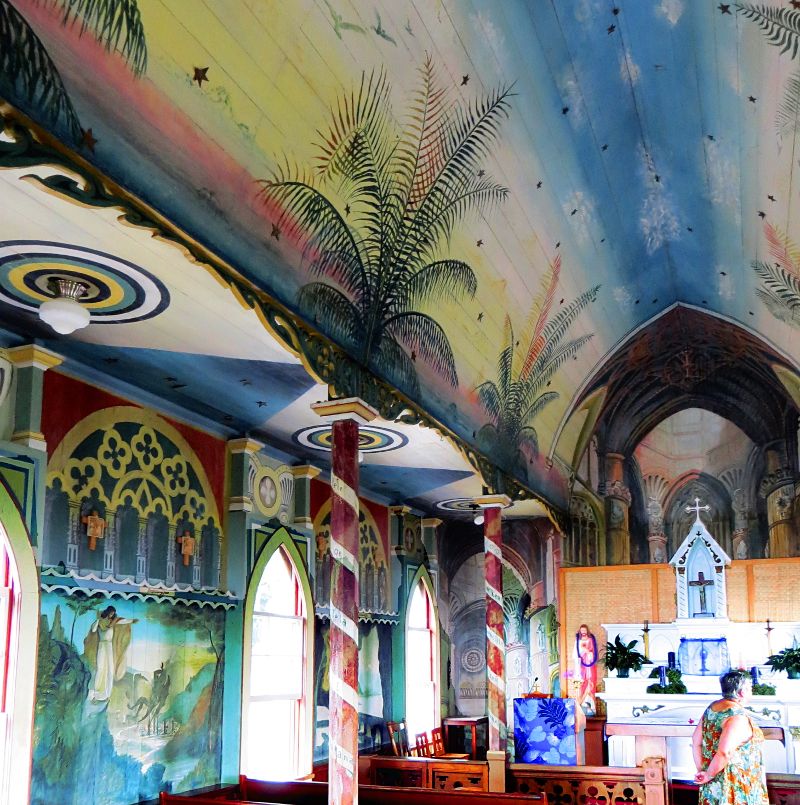
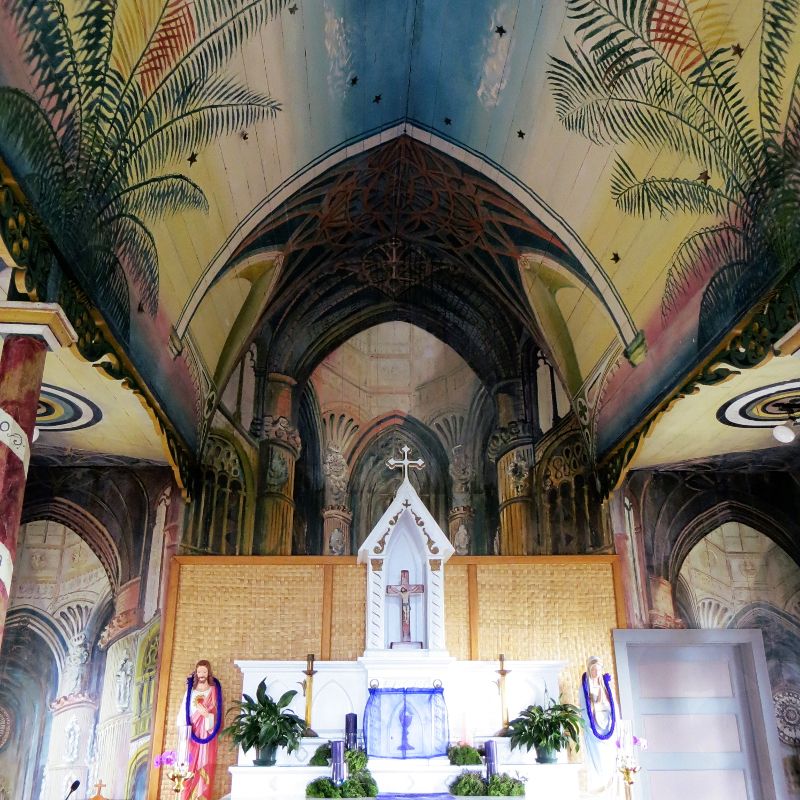
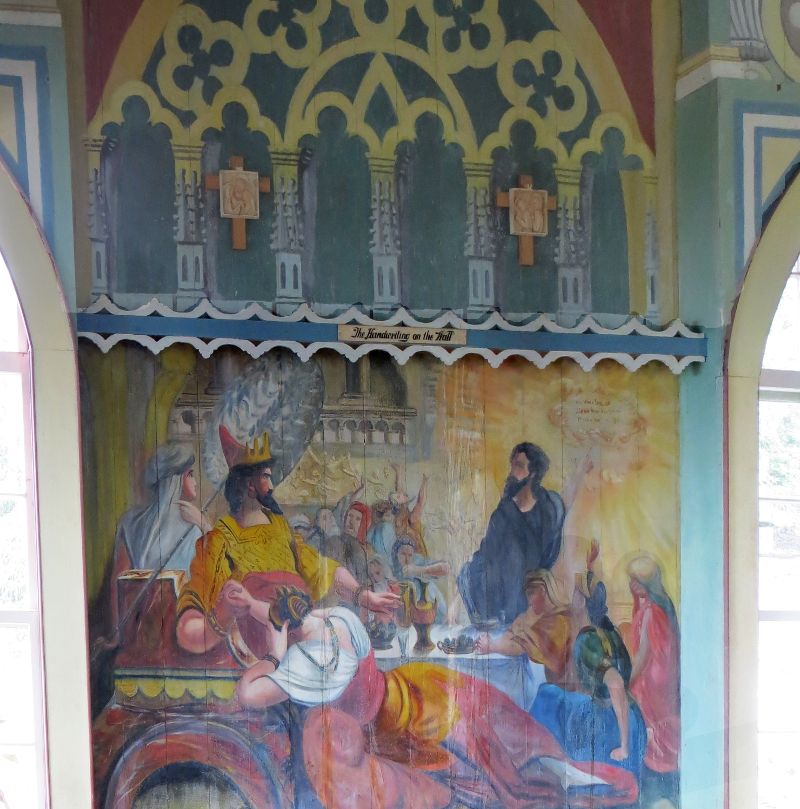
The parish tries to keep up the building and grounds, but it is a constant struggle against deterioration. Time has done a number on the panel entitled, simply, “HELL.” An application of digital enhancement gives a better idea of good Father Velghe’s vision.
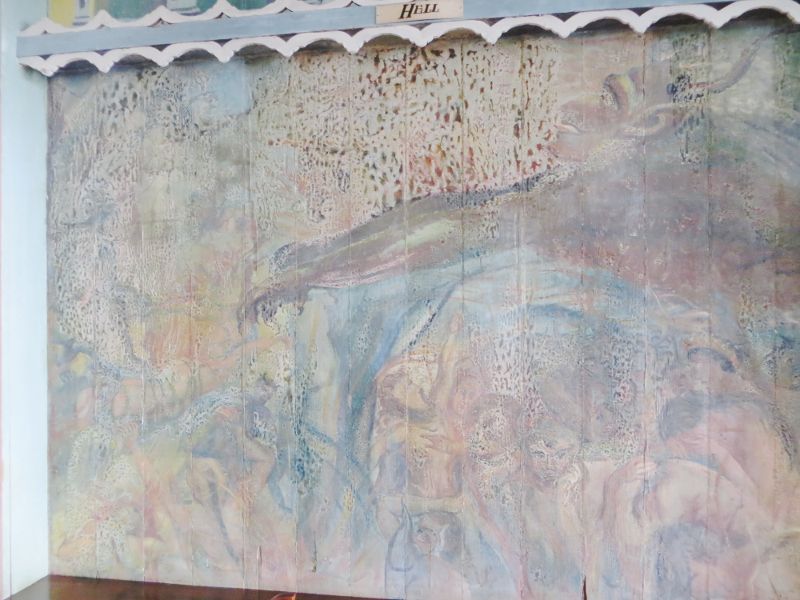
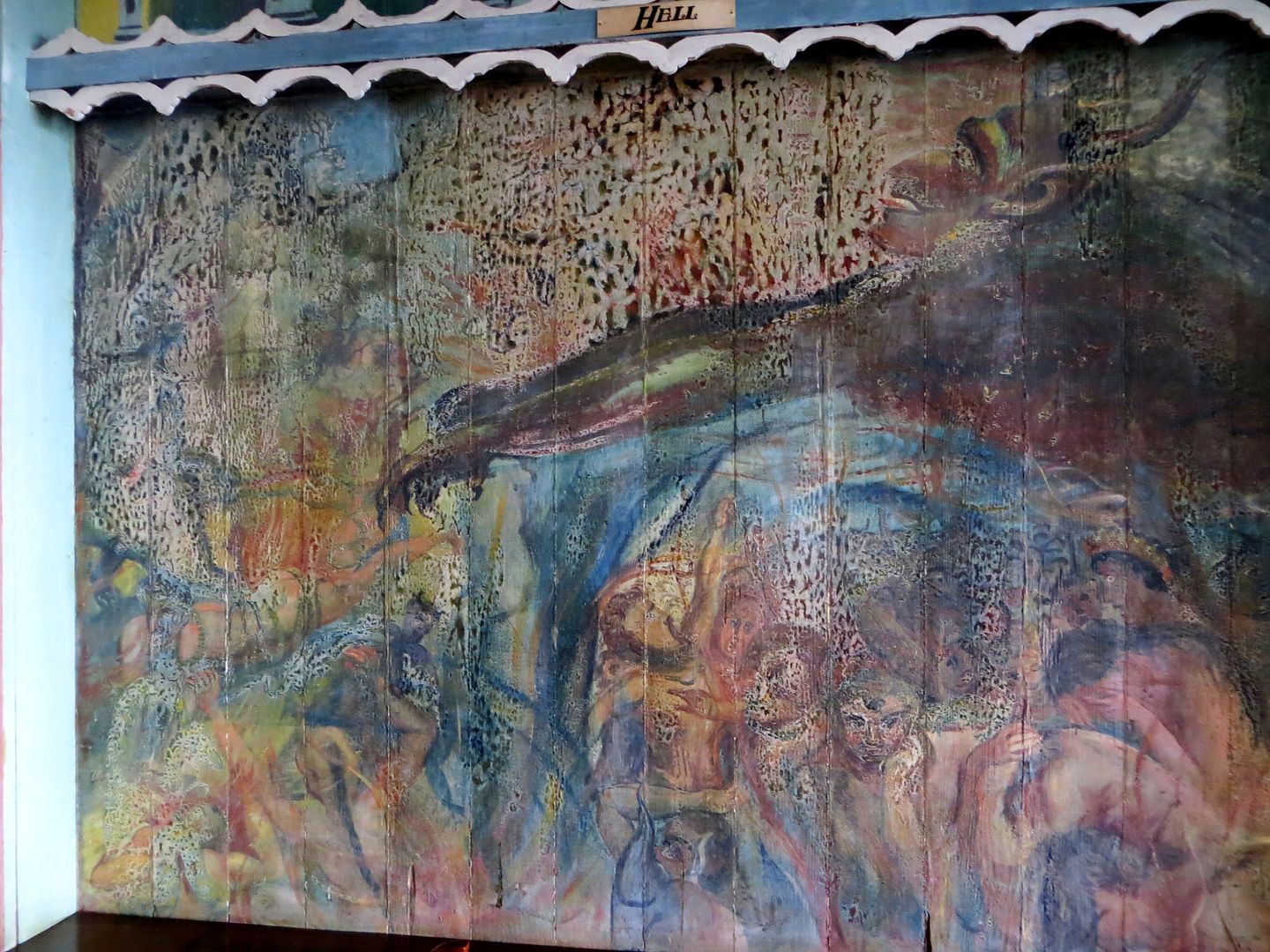
During their careers in education, Idiot She and He had the opportunity to move together to a brand new school. They found the process by which teachers chose their classrooms fascinating. The rooms were chosen by seniority. The building has a few classrooms with truly stunning views. The Idiots were initially surprised that some experienced teachers passed over those for “less interesting” classrooms. But there was wisdom involved. Even the most interesting teacher will lose the competition with a good window, especially when teaching teenagers in springtime.
The Idiots wouldn’t want to preach a sermon in competition with the views from St Benedict’s.
